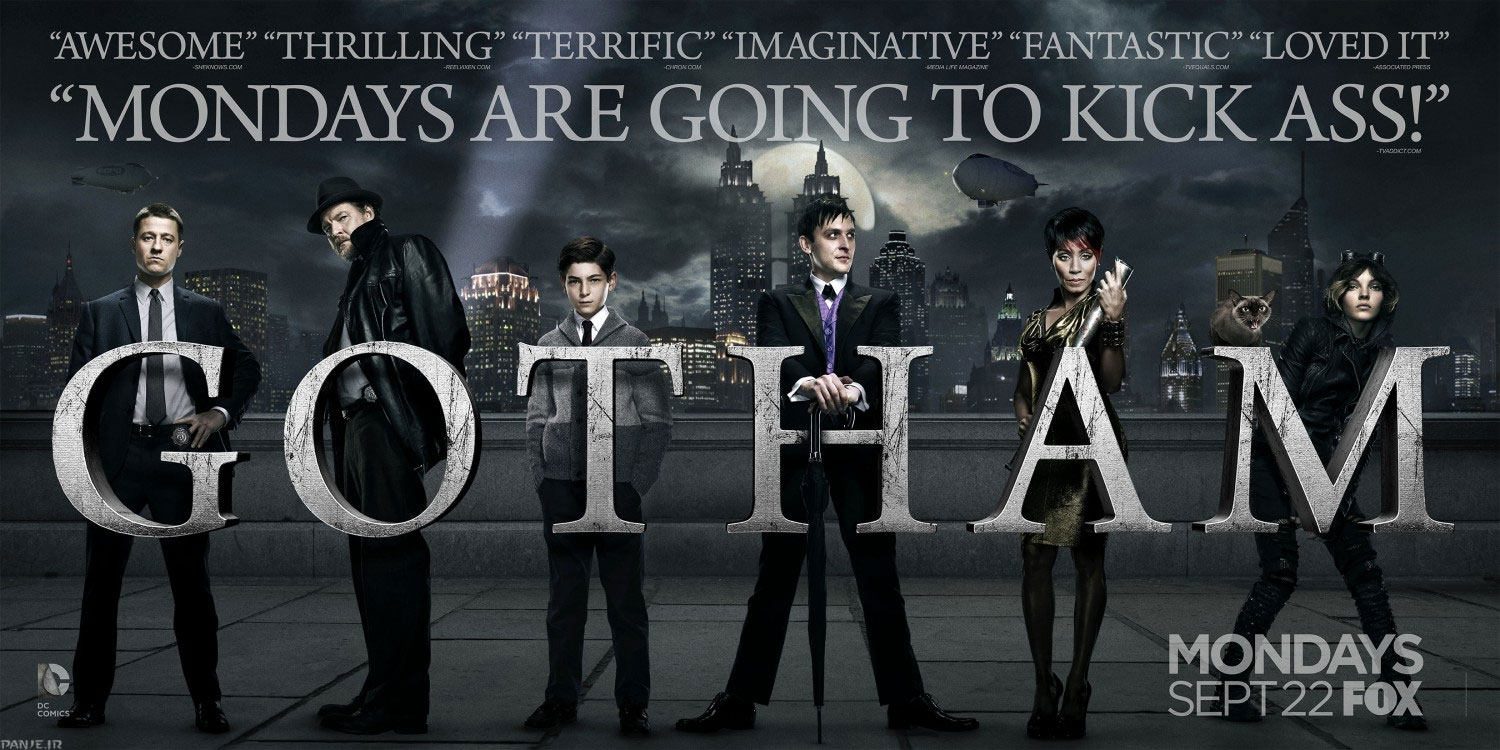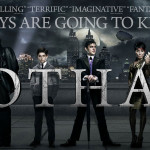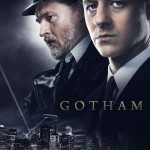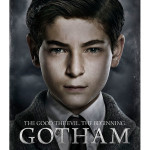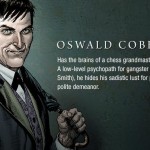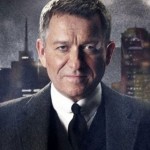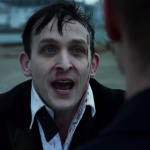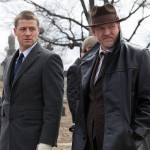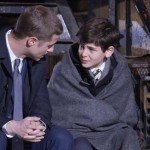More superhero yarns converted from comic book via big screen to Netflix. Last time it was Daredevil, this time Gotham. I’m sometimes quoted as saying the last thing we need is yet more superhero rehashes, and I stand by that, even Bob Kane‘s enduringly popular Batman. The difference is that Gotham takes an oblique angle on the prequel to present a crime drama markedly lacking in superheroes in a very grim parallel version of New York City. In fact, you begin to wonder if there is anyone in Gotham that isn’t corrupt, or with some evil sideline – bit like how Liverpool is portrayed in bad jokes.
But the star of the show is decidedly clean and honest through and through: young Jim Gordon (Ben McKenzie), future police commissioner, is the good guy here. He battles baddies and police corruption, partnered by loveable rogue Harvey Bullock (Donal Logue), when he is not trying to catch up with his involved love life. Gordon’s regular adversaries include the city’s main crime bosses, all of whom spend most of their time engaged in vendettas: Carmine Falcone (John Doman), Fish Mooney (Jada Pinkett Smith) and Sal Moroni (David Zayas, lately Sgt Angel Batista in Dexter) spend so much plotting against one another you wonder how they have time for running their respective criminal empires.
However, the primary interest for the series comes in part from seeing a junior Bruce Wayne (David Mazouz) and his sidekick/guardian butler Alfred Pennyworth (Sean Pertwee, son of Jon!) discovering both his future metier (motivation: understanding what makes Gotham tick and discovering who killed his incredibly wealthy parents before his very eyes) and the seamy, corrupt side of the city, but more especially the evolution of the back stories behind many of the arch villains of the Batman era.
For The Penguin read a very junior embryonic gangster in Oswald Cobblepot (the excellent Robin Lord Taylor); for Catwoman, think of a juvenile Selena Kyle; for Poison Ivy, an even younger Pamela Isley (here renamed Pepper); the Scarecrow‘s story is that of Jonathan Crane, son of the mad Dr Gerald Crane; ah yes, there’s the Riddler aka Edward Nygma (enigma, geddit?), nerd and police forensics officer; look carefully and you might see Prof Hugo Strange; and Harvey Dent makes regular appearances as a progressive and likeable , later to be known as Two-Face.
Of the principle villains, we’re only really missing the Joker, and with series 2 of Gotham coming hot on the heels of the 22 episodes of series 1 that omission will surely soon be corrected.
Of course, there is a vast cast of characters in Gotham, way too many to mention here, pretty much all of whom would keep a Freudian analyst in business for donkey’s years. Some characters do not appear in the original DC Comics, and a number are changed to invoke poetic licence, but in series two the eternal marketing tool, the focus group kicks in – some characters are dropped, some step into the limelight and are promoted to “recurring characters” rather than “guest characters” – depending on how well audiences rate them. To my mind this is of secondary importance to how well the character is defined, performed and contributes to the narrative, but then I don’t care about ratings.
In short, Gotham subtly changes (for dramatic purposes) and expands upon its source material, but sympathetically. There is, as we find here, much more to Gotham than Batman and a straight battle between good and evil. As with Daredevil there are many shades of grey along the way, which certainly provides greater authenticity and watchability, given the sophistication of modern audiences.
It does, however, become formulaic over the course of a season of 22 episodes, such that episodes become more predictable, such that the focal point of the moral ambiguity behind these sharply-drawn characters becomes much easier to spot. In fact, while the plot of Gotham is very dark, albeit injected with sly tongue-in-cheek humour, it lacks the gothic blackness of the Dark Knight series, which to my mind became a triumph of style over substance.
The problem comes from the fact that it can’t decide where it’s heart lies: action thriller, comic strip or merely pastiche? At times it might touch on each of these genres in turn, but never truly settles on one style. Clearly it’s light years apart from the 1960s Batman TV series, works hard to differentiate itself from the movie franchise(s), succeeds admirably in breathing life and multiple dimensions into the characters, cooks up enhanced plots, but never truly defines it’s own existence – the attention to detail has somehow overtaken the big picture.
So a flawed series, but undeniably an entertaining one. I’ve no doubt it will leap from success to success, though it can’t progress to series 3, 4, 5 and beyond for one very simple reason: that would simply be a rehash of Batman. Prequels have to end at the start of future tellings, or they become a sad and hollow reflection of themselves. Knowing when to stop is critical if you want to preserve a happy memory!

